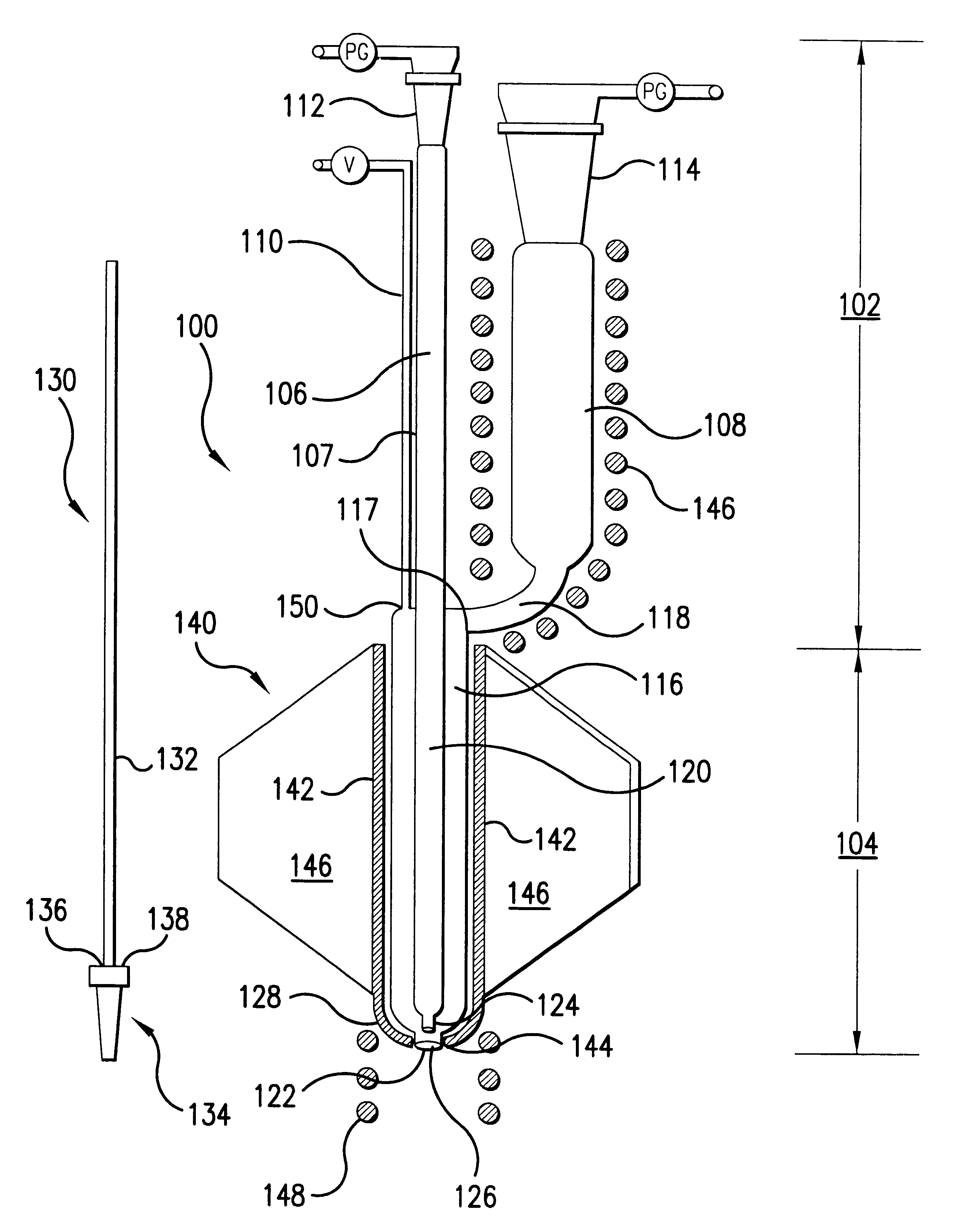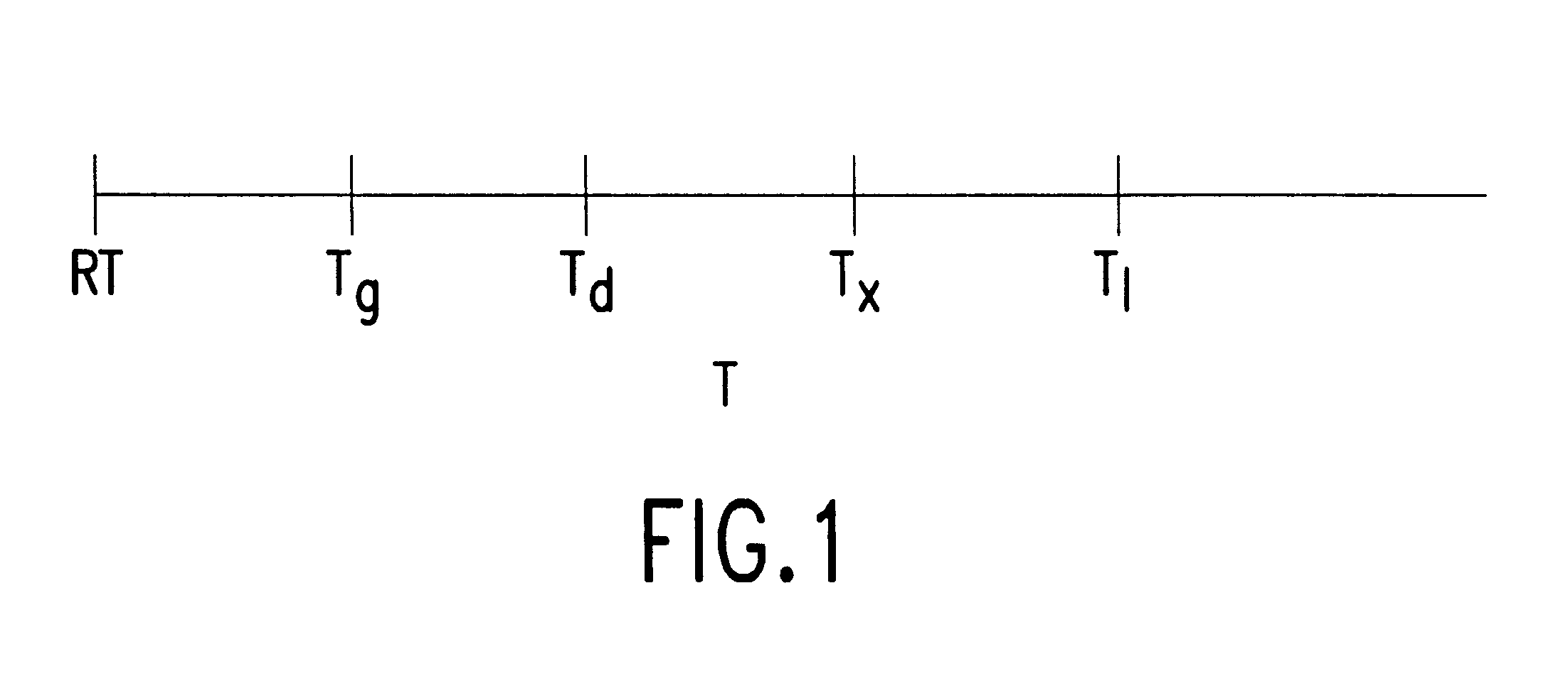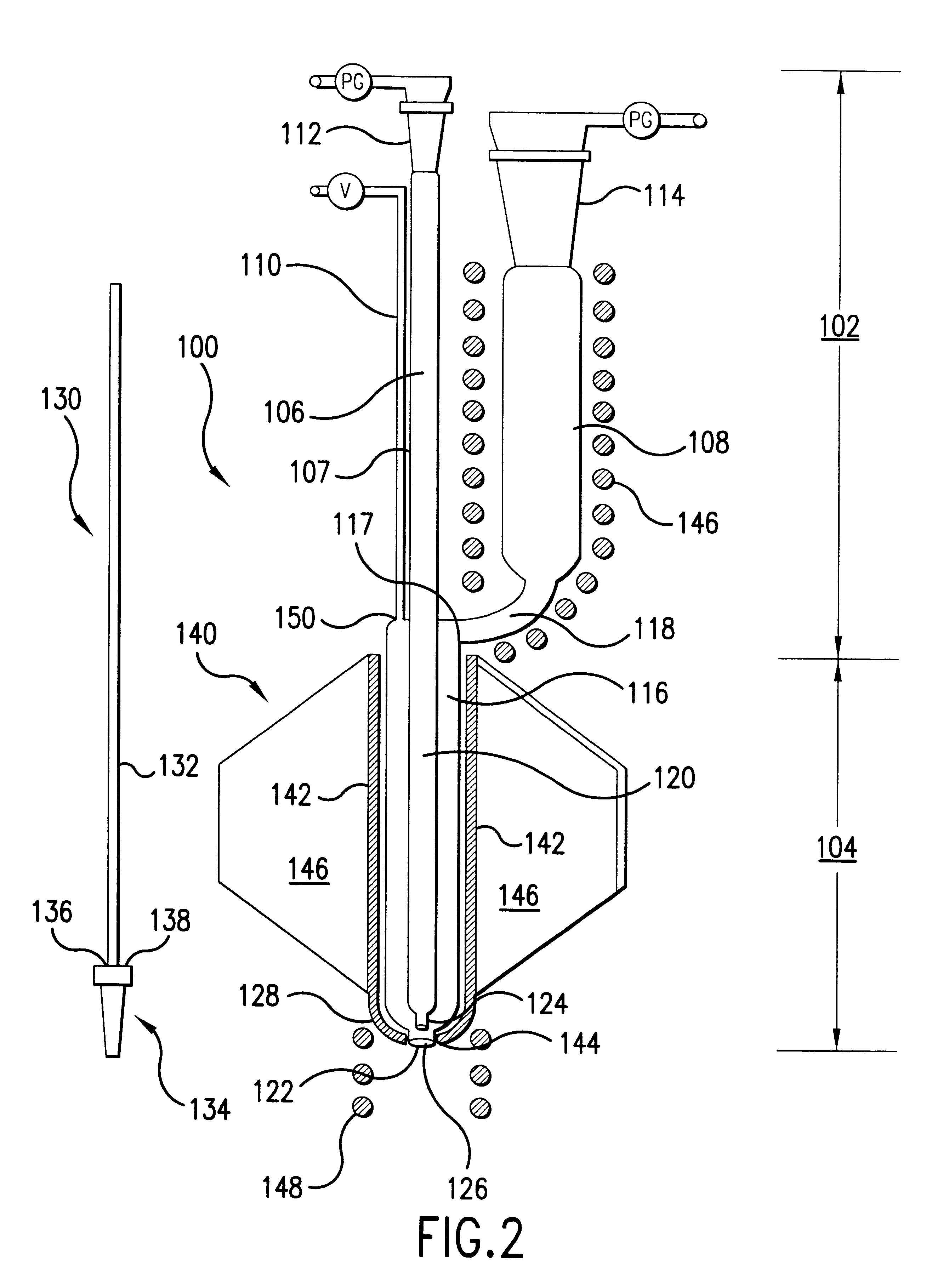Multi heating zone apparatus and process for making core/clad glass fibers
a technology of core/clad glass fiber and heating zone, which is applied in the field of process and apparatus for fabricating core/clad glass fiber, can solve the problems of not being thermally stable, unable to soluble rare earth elements in most stable chalcogenide glasses, and having a tendency to crystallize, and achieves the effect of not adding additional loss, increasing fiber loss, and negative loss
- Summary
- Abstract
- Description
- Claims
- Application Information
AI Technical Summary
Benefits of technology
Problems solved by technology
Method used
Image
Examples
example 2
In order to fabricate single-mode fibers, the fiber drawing conditions of Ex. 1 were changed as follows: the pressure above the core glass was reduced to one inch of water, the pressure above the cladding glass was raised to two psi, and the drawing speed increased to 15 m / min. The resulting fiber had a core diameter of 7 microns and overall diameter of 80 microns.
example 3
Procedure of Ex. 1 was followed in fabricating single mode glass fiber of core diameter of 4 microns and overall diameter of in excess 125 microns. Fabrication of the single mode fiber of core diameter of 4 microns was made possible by a modification to the apparatus, as shown in FIG. 4, which involved replacing plug 130 with a much shorter plug to block orifices 122, 126 and suspending the core glass rod from the top by means of a wire secured to a notch in the core glass rod. The wire was threaded through a cap disposed at the upper extremity of the center tube.
PUM
| Property | Measurement | Unit |
|---|---|---|
| diameter | aaaaa | aaaaa |
| thick | aaaaa | aaaaa |
| softening temperature | aaaaa | aaaaa |
Abstract
Description
Claims
Application Information
 Login to View More
Login to View More - R&D
- Intellectual Property
- Life Sciences
- Materials
- Tech Scout
- Unparalleled Data Quality
- Higher Quality Content
- 60% Fewer Hallucinations
Browse by: Latest US Patents, China's latest patents, Technical Efficacy Thesaurus, Application Domain, Technology Topic, Popular Technical Reports.
© 2025 PatSnap. All rights reserved.Legal|Privacy policy|Modern Slavery Act Transparency Statement|Sitemap|About US| Contact US: help@patsnap.com



